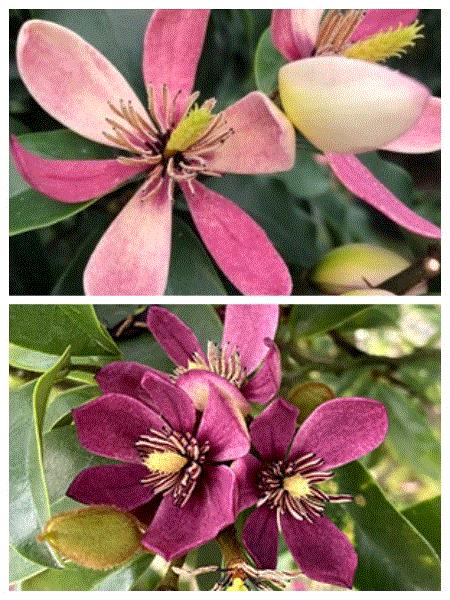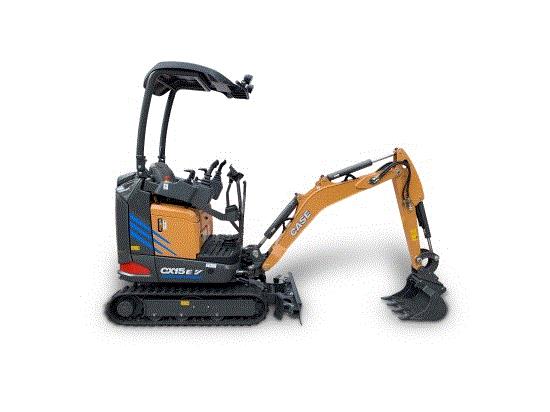Young Grower Award—Last Chance!
You have one day left (nominations close tomorrow, March 1) to nominate an excellent, hard-working professional under the age of 35 for the 2022
GrowerTalks/Ball Horticultural Company Young Grower Award! For the last 17 years, GrowerTalks has recognized young horticulturists for standing out from the crowd in this tough business, who—for whatever noble reasons—have chosen to have a career in this industry.

What young grower doesn't want to be on the cover of GrowerTalks?
After three finalists are chosen, each is asked to write guest editorials for the June issue of GrowerTalks, gets a free trip to Cultivate’22 and, while they’re in Columbus, attend a special dinner with Anna Ball and other industry luminaries. The winner is announced at the Unplugged event during Cultivate’22, will be the subject of our September issue cover story and serve as one of our judges for next year’s award.
The nomination form can be found HERE.
Progress in Boxwood Blight Management
How about a really interesting webinar opportunity titled, “Progress In Boxwood Blight Management in the United Kingdom & New Zealand: 1990s to 2021” that will be presented by Dr. Matthew Cromey, Senior Plant Pathologist for the Royal Horticultural Society (UK). You can register here for the event, which is to be held on March 10.
In this seminar, Dr. Cromey will trace the progress of box blight and its management in the UK since it was first found in the mid-1990s. Early advice to gardeners was to remove all Buxus from gardens where the disease had been recorded. Since then, considerable progress has been made in keeping gardens free from box blight, but also to avoid the eradication of the host from gardens where it does appear. While it's still a difficult disease, there are increasing options for its management. The situation in the UK will be compared with that in New Zealand, where box blight has also been present since the 1990s.
Stellar Ruby Magnolia
This is one of those species that’s had some identity crisis issues in the recent past. Is it a member of the genus Michelia, Magnolia or Liriodendron? Well, while it’s often debated, right now it’s Magnolia figo and an interesting new cultivar is the dark pink to ruby flowering cultivar Stellar Ruby (bred by Pat McCracken).

This gives an idea of flower color variation from older flowers (above) to newly opened flowers (below).
Stellar Ruby, like most banana shrubs, is a multi-use shrub with narrow, pyramidal growth habit and dense foliage that can be grown in shady spots (where it will assume a more open canopy and bloom a little less) to sunny spots (particularly in more northern areas with consistent soil moisture). This evergreen shrub flowers from early spring to early summer and sometimes reblooms a bit in late summer if environmental conditions aren't too stressful.
The flowers are fragrant and a unique ruby color (for the species). Unlike some Magnolia figo cultivars that can be slow to root and flower from cuttings, it flowers on plants that are young in age. After 10 years, Stellar Ruby reaches a height of 13 ft. and a width of 60 in., so it can be used as a back screen on a perennial border, a hedge, a focal point or in a high traffic area where the fragrance will attract conversation while in bloom.
If it had one fault, it would be that it has a relatively narrow hardiness range, from 7b to 9b. But when in the zone(s), it’s certainly worth the investment and this cultivar is actually a bit more cold hardy than other cultivars (always look at the bright side).

Case Battery Operated Mini-Excavator
While many of us saw it coming, Case’s announcement of the first battery-powered mini excavator is still exciting news. Last week, the company rolled out a “first look” of the CASE CX15 EV (electric vehicle), an electric mini excavator with plans for the North American market in 2023.
 The CASE CX15 EV is a 2,900-pound mini excavator powered by a 16 kW electric motor and features retractable tracks that get machine width down to about 31 in. for going through doors and working in confined spaces. It can also work very close to structures and obstacles with a minimum swing radius design.
The CASE CX15 EV is a 2,900-pound mini excavator powered by a 16 kW electric motor and features retractable tracks that get machine width down to about 31 in. for going through doors and working in confined spaces. It can also work very close to structures and obstacles with a minimum swing radius design.
The 21.5 kWh lithium-ion battery is charged either by the 110V/220V on-board charger or via an external rapid charger that can have the machine charged extremely fast, typically within 90 minutes. Depending on the type of work, the CASE CX15 EV will provide enough power to work through a full eight-hour work day. A load-sensing hydraulic system delivers smooth and powerful performance that allows the operator to dial the machine in to each task.

Crape Myrtle Bark Scale Q&A
Have you seen very ugly sooty mold on trunks and stems of crapemyrtles and wondered how to stop that?
Since 2013, the multi-state multi-discipline CMBS team led by Dr. Mengmeng Gu at Texas A&M AgriLife Extension has been working on sustainable management of crapemyrtle bark scale (Acanthococcus lagerstroemiae), an emerging exotic pest "bugging" the No. 1 flowering tree, crapemyrtle, in the U.S. See more details HERE.
Dr. Gu and her team held a Q&A webinar session earlier today on crapemyrtle bark scale. You can register to watch the archived webinar HERE.

Did you know CMBS has quite a few hosts other than Lagerstroemia spp.? Well, it does, such as soybean (pictured here).
Happy Days Dahlia Series
While I often cover a specific cultivar in Nursery & Landscape Insider, at times there's a series that's worthy of some love. Given the resurgence in popularity of dahlia that I’ve been noticing in the last year, and the diversity of flower colors within the Happy Days Dahlia series, it seemed appropriate to mention the entire series here.
Compared to the plethora of dahlia cultivars available, the Happy Days series offers a pretty unique trait that sets the series apart, which is nearly black, dissected foliage. This trait certainly makes the flowers really stand out. And while hardy to a relatively small range (Zones 8 to 10), these can easily be treated as annuals. If there's really one enemy of dahlias, it’s the squirrels and chipmunks (sometimes voles as well), which can be quite destructive, and in some cases, can relegate dahlia to containers.

Pictured are four of the 10 cultivars available, including Yellow (top left), White (top right), Fuchsia Halo (bottom left) and Cherry Red (bottom right).
Nonetheless, with 10 cultivars to choose from there’s definitely a color for everyone to select for ultimate coordination.

Beacon Impatiens Raising Cash for Charity
I’m a big softie when it comes to feelin’ good about people and products that go the extra mile to make this world a better place. It doesn’t hurt when it’s a game-changing series like the Beacon Impatiens. PanAmerican Seed has really gone above and beyond in raising funds for charity and hats off to them for that. The disease-resistant Beacon series has brought light—and happiness—back to shade gardens worldwide. Now entering year three, PanAmerican Seed announces that the 2022 Beacon Impatiens charitable donation will fight low-vision issues, such as macular degeneration—a disease affecting the eyesight of millions of people worldwide.
The affliction was brought to PanAmerican Seed’s attention through the experience of one of its own team members. To maximize its impact, two charities will receive a portion of 2022 global seed sales of Beacon Impatiens: Spectrios Institute for Low Vision (www.spectrios.org) and the Macular Society (www.macularsociety.org). Both groups provide family support, fund raising and education empowerment for their members. In addition, they invest in research to offer the hope of new and improved treatments for those living with low vision.
“It is devastating to be told you are losing your sight—to lose the ability to see the faces of your loved ones or your ability to read. Sadly, macular disease, the biggest cause of sight loss in the UK and the developed world, is a vast and growing problem. Every day, more people are diagnosed with the condition,” says Cathy Yelf, CEO of Macular Society. “We are delighted to be working with PanAmerican Seed so we can shine a light on macular disease over the coming months and ensure we can reach everyone who needs our help.”

Our Wacky World—Notes from the Edge of Sanity
Last Wednesday, I was at a meeting of agricultural producers where many folks commented in passing that fertilizer and feul prices were absolutely carving a chunk of profitability off the table. I warned them that it was about to get a lot worse and less than a week later, here we are. Fuel prices are up around 10% to 15% in the last 10 days (depending on location) and fertilizer prices are up 20% to 25% in the last five days. But why?
Well, Russia accounts for 21% of global exports of potash, a basic component of nearly all fertilizers. Couple that with Belarus (which is in bed with Russia) that accounts for an additional 21% of global potash and you have a perfectly crappy situation with sanctions ramping up from the civilized world. Oh, and Russia is also the number one exporter of urea (18% of global market) and ammonium nitrate (49% of global market). Then there’s Ukraine, which exports about 12% of the global ammonium market.
What’s been the result of the Ukrainian invasion by Russian forces? Prices for the popular nitrogen fertilizer urea in New Orleans surged Friday to $720 per short ton versus $560 earlier in the week, a 27% jump, according to Bloomberg’s Green Markets. And this isn't going to improve in the short-term, folks, as this conflict looks to drag on for some time, as will economic sanctions (and with good reason).
Oh, and just a personal shout out to Ukraine. The sane world stands with you.

Live authentic,

Matthew Chappell
Editor-at-Large
Nursery & Landscape Insider
This has been received by 31,506 of the hardest-working horticulturists in show business!
If you're interested in reaching 31,506 clients who eagerly await every Nursery & Landscape Insider and surely read every word, contact Kim Brown ASAP and she'll hook you up.